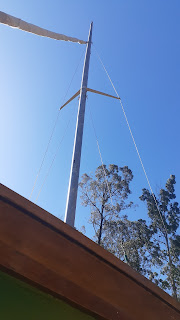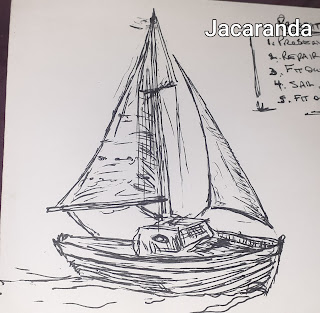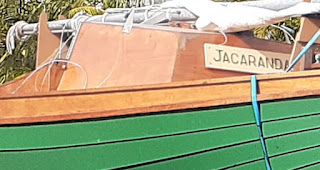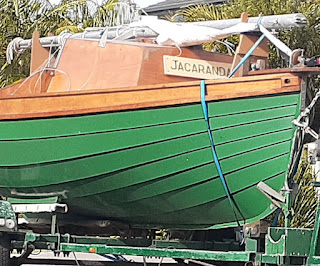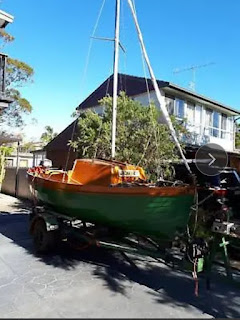Sea Anchor, Painting the Bilge
From "Tinkerbelle" by Robert Manry. When three wind rose to near gale levels, a sea anchor was deployed from the bow. 150' of 1/2" nylon warp attached to" an old army canvas bucket". A lighter line was attached to the bucket, 15' in length, attached to a buoy to add the bucket sinking too far. The rudder was also removed. With this set, Tinkerbelle drifted slowly downwind, advising breaking waves, and with a relatively steady motion. ÷ = / × + € I read online that sealing the bilges of wooden boats was best done with grey metal primer that contained "flakes of metal". Okay. Well three things; I couldn't ascertain whether Kill Rust Aluminium - No Primer Required actually contained aluminium flakes (but it did have Titanium Dioxide?), "Jacaranda's" bilge had already been sealed, mostly with varnish, ...


